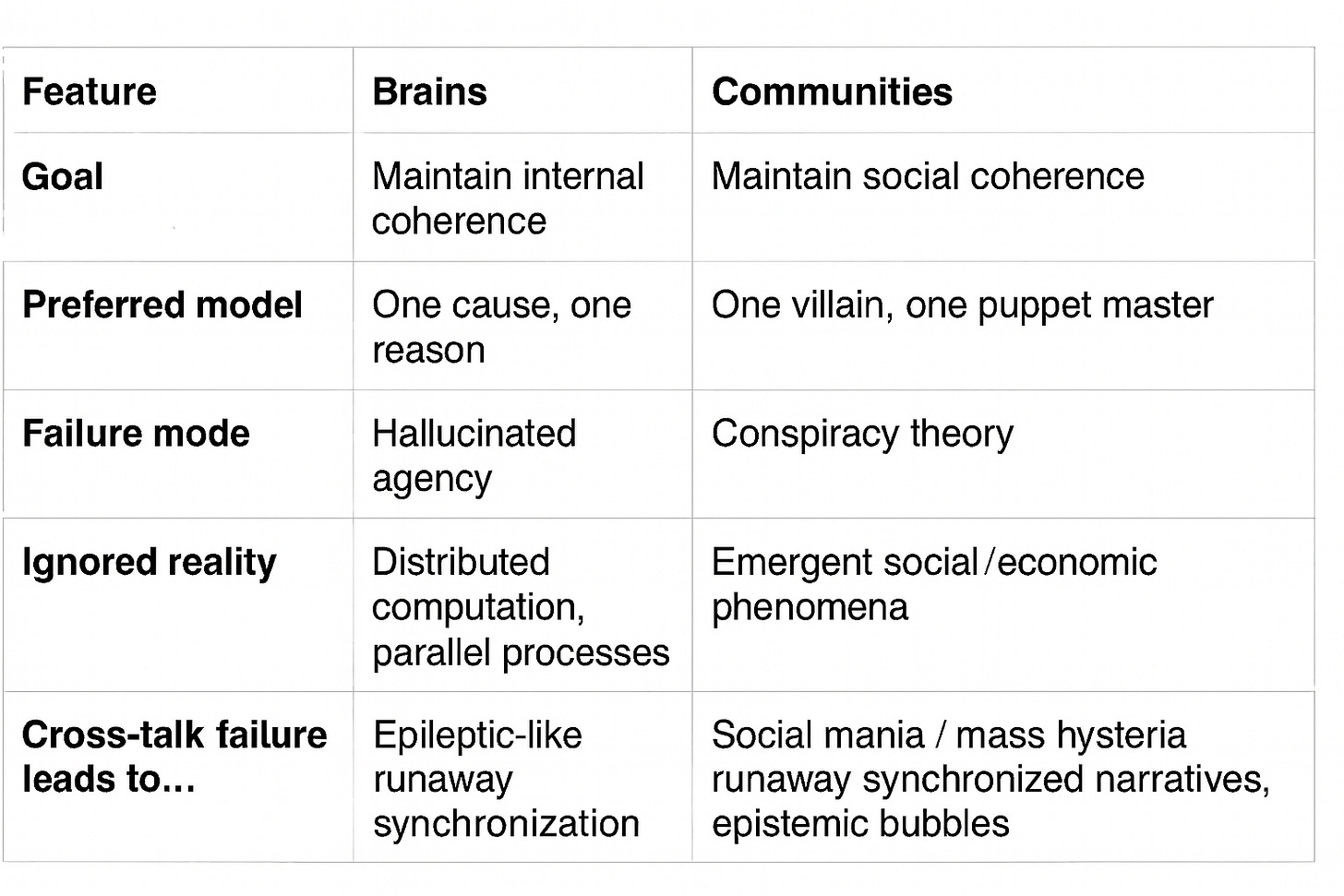Brains and sociopolitical communities
Brains and sociopolitical communities are both coherence-driven networks: they prioritize maintaining an internally consistent narrative over discovering the underlying truth. In both systems, local “narrators” simplify complexity into single-cause explanations — in brains, this can lead to hallucinated agency, while in communities, it manifests as conspiracy theories.
The table below compares how these systems operate, the kinds of errors they make, and why cross-talk — between brain subsystems or between communities via free expression — is essential to avoid runaway synchronization, like epilepsy in brains or mass hysteria in societies.
CLAIM: No sufficiently sophisticated association-style thinking entity can fully represent the distributed causal structure of the processes generating its inputs.
COROLLARY: The entity will tend to construct compressed, agent-driven narratives that systematically misattribute emergent effects to top-down causes.
That’s why
(1) Brains hallucinate agency (“I chose that thought”).
(2) Communities hallucinate conspiracies (“They orchestrated this”).
(3) LLMs hallucinate reasoning (“I produced this because X”), even when X wasn’t causally relevant.
—
Interesting facet of this “Godel-like” inability for sociopolitical communities to grasp their own mechanisms — and thus to be prone to conspiracy theories instead — is that it means that conspiracy theory tendencies aren’t merely due to individual human bias, but also due to the constraints on how community networks themselves think and formulate hypotheses.


